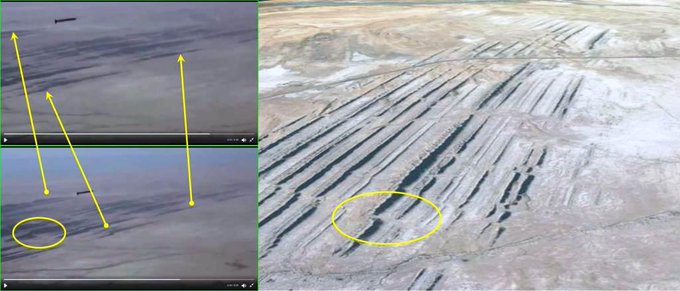 1. On January 9, 2017 evening, DG ISPR official twitter handle @OfficialDGISPR put out a video congratulating the country - Pakistan - for successful test of new submarine launched cruise missile (SLCM) Babur-3.
1. On January 9, 2017 evening, DG ISPR official twitter handle @OfficialDGISPR put out a video congratulating the country - Pakistan - for successful test of new submarine launched cruise missile (SLCM) Babur-3.
2. At a cursory glance, the video appears to be a successful test with missile exiting water surface, cruising along the coastline and finally hitting its target a red flag with a cliff faced background. The ISPR had done well to hide the missile's start, cruising journey and the target hit. But alas, it was not to be so.

3. Geo-location: The video had certain terrain detail especially from s16-24 which looked like Baluchistan mountains usually seen along the coast of Pakistan. A diligent search was made along the entire coast line of more than 500kms to locate the area but to no avail. The missile was shown cruising and hence the camera too was flying probably in a helicopter and hence the visual panoramic discrepancy was realised and the Google Earth app was tilted to give a panoramic view.
Lo and behold, it was there about 35kms east of Ormara. It was 25°20'13"N 64°53'18"E to be precise. Once the location was identified, matching the details was not a difficult task. So a second look at the video was taken and one realised that the missile colour and speed change after 15 seconds of the video.

Video has been created by combining three clips s0-15, s16-24 and s24-29. [Photo credit: @RajFortySeven/Twitter]
4. Mensuration: The measuring of distances is given extreme importance in analysis of satellite imagery. On measuring distance between the geo-located area compared to video from s16-24, it was realised to the utter surprise, distance covered was approximately 15kms if not less. Considering that the flight of 8 secs covered 15kms the speed works out to be 6,750kms which is almost high hyper-sonic speed and slow as the video appears.
5. Parallax effect: The video from s20-24 shows the red missile looking more like RA'AD than Babur almost stationary. Considering the parallax effect was beyond imagination since the camera would have had to move at higher speeds than the missile to capture it stationary which is virtually impossible.

Missile was flying with canister for almost 8 seconds? How is it possible? [Photo credit: @RajFortySeven/Twitter]
6. Close scrutiny: On a deeper inspection of the video, it was realised that the video actually is a fake. It has been created by combining three clips s0-15, s16-24 and s24-29. The observations made on the video could be summerised as below:-
a. Exit from water: It is at an incline, suggesting it is not a system that can launch vertically. Meaning it is probably launched from a submerged barge and not an actual submarine.
b. The SLBMs normally have cavitation caps to avoid cavitating effect, which blast off immediately on water surface exit. Here we see something exiting which is of the size of the missile. It can be dubbed as the cavitaion canister.
c. The last clip showing target hit has a cliff in the background. Such cliffs are only seen at Ormaraand Gwadar facing the North. Here considering the entire flight path of missile is true and correct, cliff must face South to show the hit from right to left.
7. It's a fake: The video is certainly a fake with CGI of probably RA'AD missile used to showcase a capability that is difficult for Pakistan to achieve.


No comments:
Post a Comment